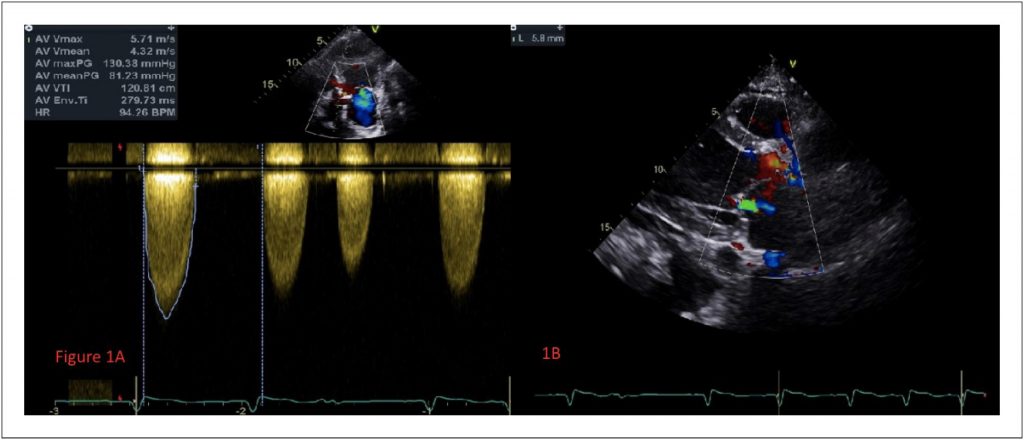Arq. Bras. Cardiol. 2021; 117(1 Supl. 1): 33-37
Transcatheter Aortic Valve Implantation Assisted by Extracorporeal Membrane Oxygenation for the Treatment of Aortic Stenosis with Cardiogenic Shock
Introduction
Aortic stenosis is a common heart valve disease, mostly caused by degenerative aortic valve disease in the elderly. Aortic stenosis obstructs the forward flow of the left ventricle to the aorta, leading to a pressure differential between the left ventricle and the aorta and increased left ventricular pressure secondary to left ventricular hypertrophy. As the disease progresses, it leads to left ventricular systolic and diastolic dysfunction and myocardial ischemia due to decreased coronary blood flow. However, cardiogenic shock secondary to aortic stenosis is one of the most serious complications and has a high mortality rate due to its limited therapeutic effect. Since its inception in 2002, transcatheter aortic valve implantation (TAVI) has become the first choice of treatment for elderly patients with severe aortic stenosis and high surgical risk due to its advantages of minimally invasive, non-extracorporeal circulation, and good medium-long term efficacy.– With the development of device technology and low-resistance transmission systems, TAVI has recently been shown to be no less effective than traditional surgery, even in medium-risk patients. However, for patients with a long medical history, significantly reduced cardiac ejection fraction (EF), cardiogenic shock, decompensated aortic valve disease, and severe complications such as intraoperative hemodynamic breakdown and malignant arrhythmia, still exist during TAVI surgery, greatly increasing the risk of TAVI. The present study reports a case of severe aortic stenosis complicated by cardiogenic shock that was successfully treated with TAVI assisted by extracorporeal membrane oxygenation.
[…]
1,139

